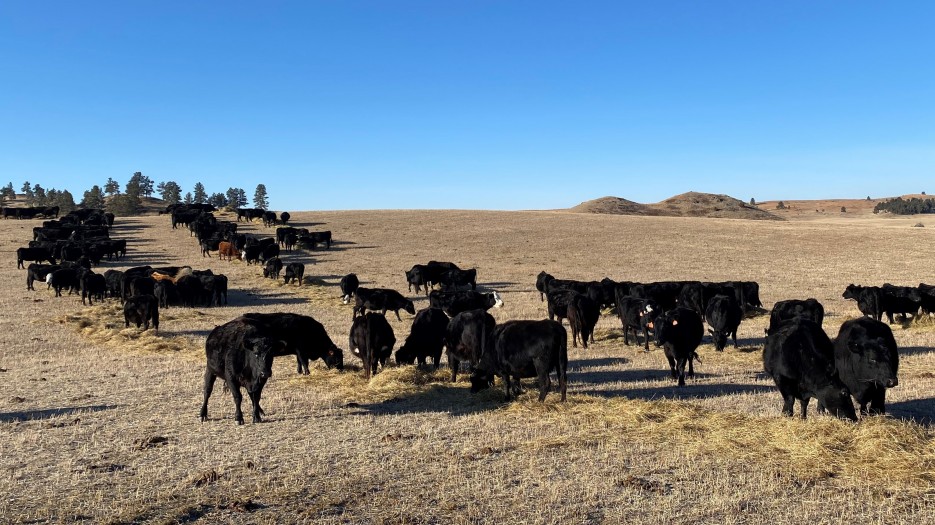With over 70% of the American West, Southwest and Northern Plains categorized in D3 (severe) drought or higher since June, the American Farm Bureau Federation designed and distributed a second round of its Assessing Western Drought Conditions survey to evaluate drought’s continued impact on farm and ranch businesses.
The 11 states in Farm Bureau’s Western region, plus the Dakotas and Minnesota, are vital to the U.S. agricultural sector, supporting one-third, or $128 billion, of total U.S. agricultural production by value. This includes 31% of beef cattle and cows, responsible (in total) for 18% of U.S. agricultural production by value. Continued drought conditions puts production at risk, along with the stability of farms and ranches reliant on their crops and livestock for income.
To further quantify some ground-level drought impacts, AFBF’s second Assessing Western Drought Conditions Survey was distributed between Sep. 13 and Oct. 18 to state and county Farm Bureau leaders, staff, and farmer and rancher members in the affected states. The survey included questions in three separate sections: Crop-Specific Factors, Livestock-Specific Factors and General Water Access. Each section consists of a set of issues farmers and ranchers may be facing because of persistent drought conditions (i.e., selling off portions of the flock/herd or reduction in planted acreage). On a scale of 0 (not at all prevalent) to 5 (extremely prevalent), respondents were asked to select how prevalent each issue was in their area based on their own experience or outreach with members.
Figure 1 summarizes across state weighted percentages of respondents reporting a certain drought-related operational factor as prevalent or higher in their area; this includes participants who selected prevalent, very prevalent or extremely prevalent. Over 70% of surveyed producers rated the following as prevalent or higher in their area: a reduction in harvest yields; increases in local feed costs linked to drought; traveling long distances to acquire feed and forage; reduced surface water deliveries; and removing animals from rangeland due to insufficient forage.
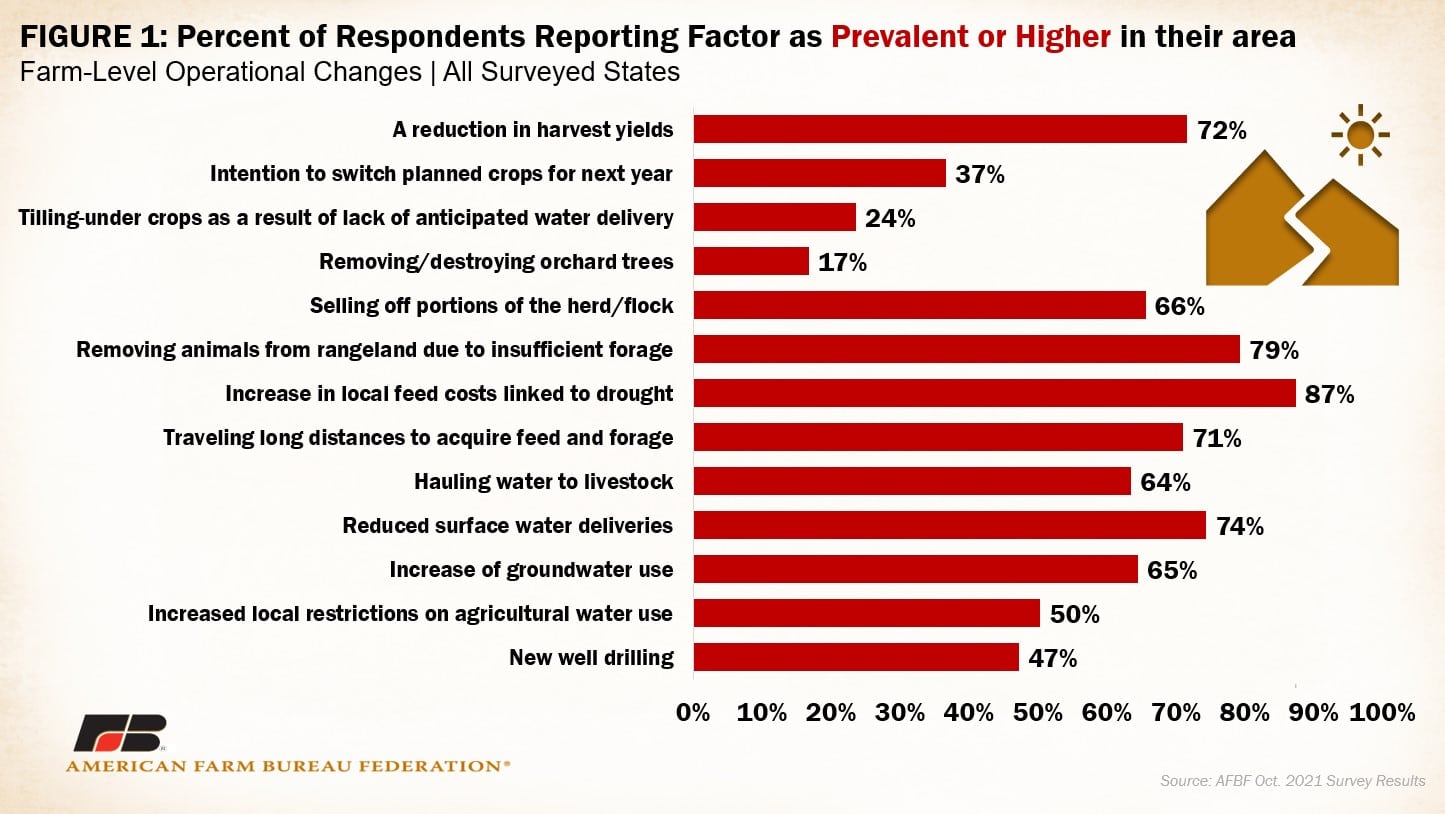
Widespread, low-quality or insufficient forage means farmers and ranchers must look elsewhere for feed. One Montana producer stated, “I was unable to harvest even a single acre of dryland hay because the grass didn’t even get tall enough to cut. I normally cut hundreds of acres in order to satisfy most of the forage needs for my cattle.”
The pressure of scarcity increases feed prices, which cuts deep into operational revenues. Unproductive rangelands also led many ranchers to sell off animals early, with herd size expectations down 32% across the region. Producers also reported reduced weights impacting animals’ final sales value, with many traveling hundreds of miles to acquire feed at exorbitant rates.
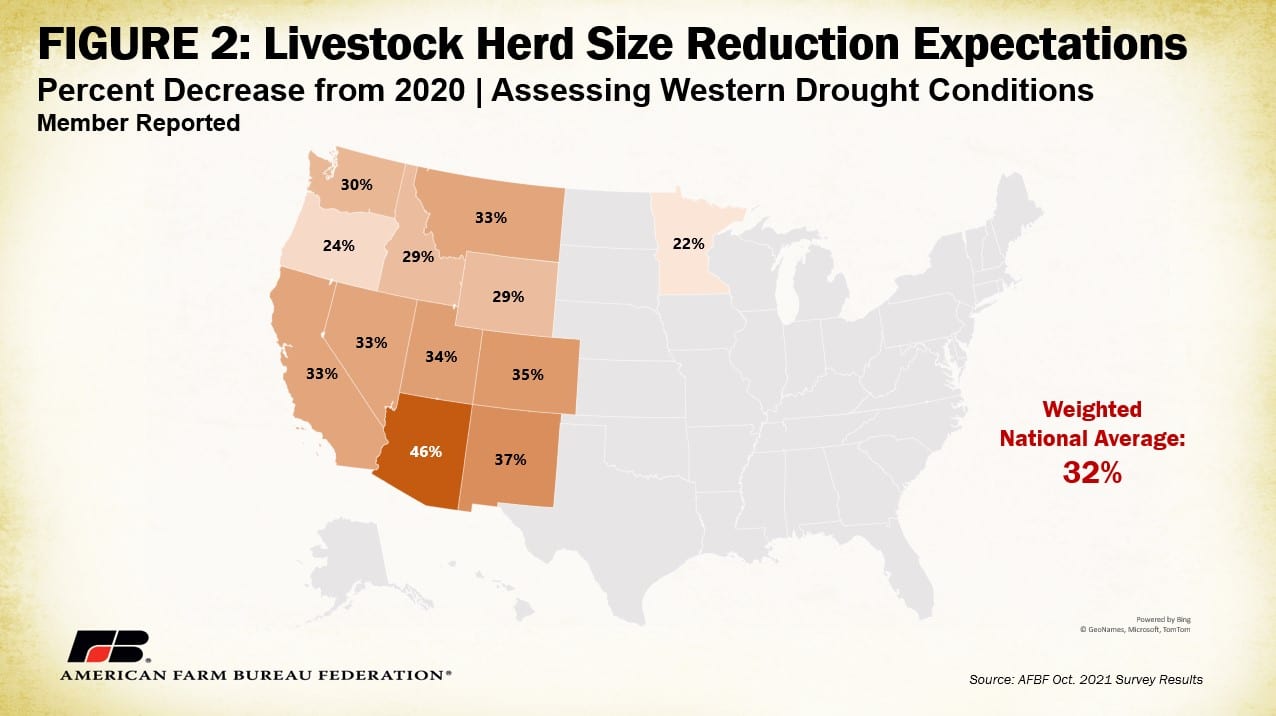
Stand-out Comment from Wyoming Farm Bureau Member:
“I paid $275 a ton for round bales of native hay trucked in from Central South Dakota.”
Stand-out Comment from Montana Farm Bureau Member:
“We sold 70% of our herd of cattle and have dispersed the remainder throughout several pastures to reduce competition for resources. We also have had greater reliance on pipelines and wells; springs, seeps, creeks have dried up. Well levels are dropping precipitously.”
Forage attainment and quality issues are far from the only hit livestock producers have taken. Reduced surface water deliveries and increased reliance on groundwater are widespread, with regional surface water delivery expectations down a whopping 50% from 2020.
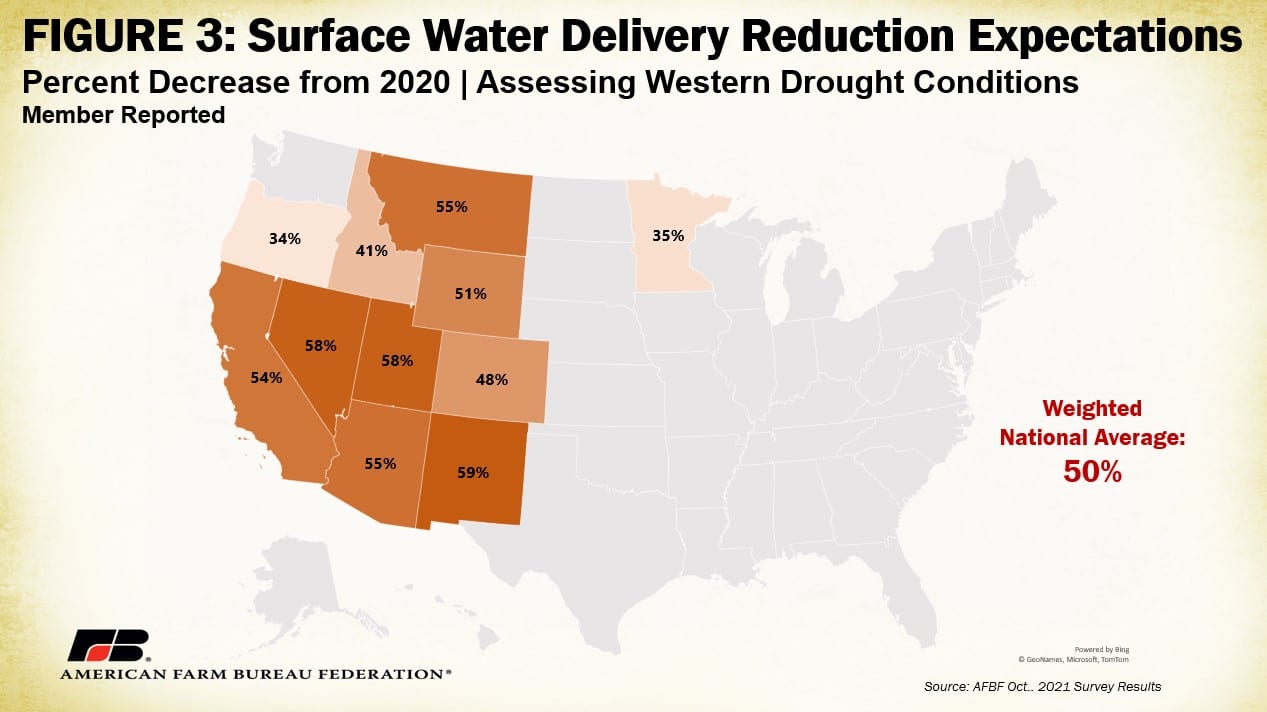
Nearly a third of respondents rated hauling water as extremely prevalent. Access to vehicles, fuel and labor to truck water up rough terrain is limited and costly. New well drilling is widespread and costly and does not guarantee access to reliable or usable flows. One Montana producer said, “A number of my neighbors had their wells go bad this summer and were forced to drill new ones. Water is really deep here, so they are looking at $50,000 or more in added expenses in a year when margins are already going to be quite thin, or negative.”
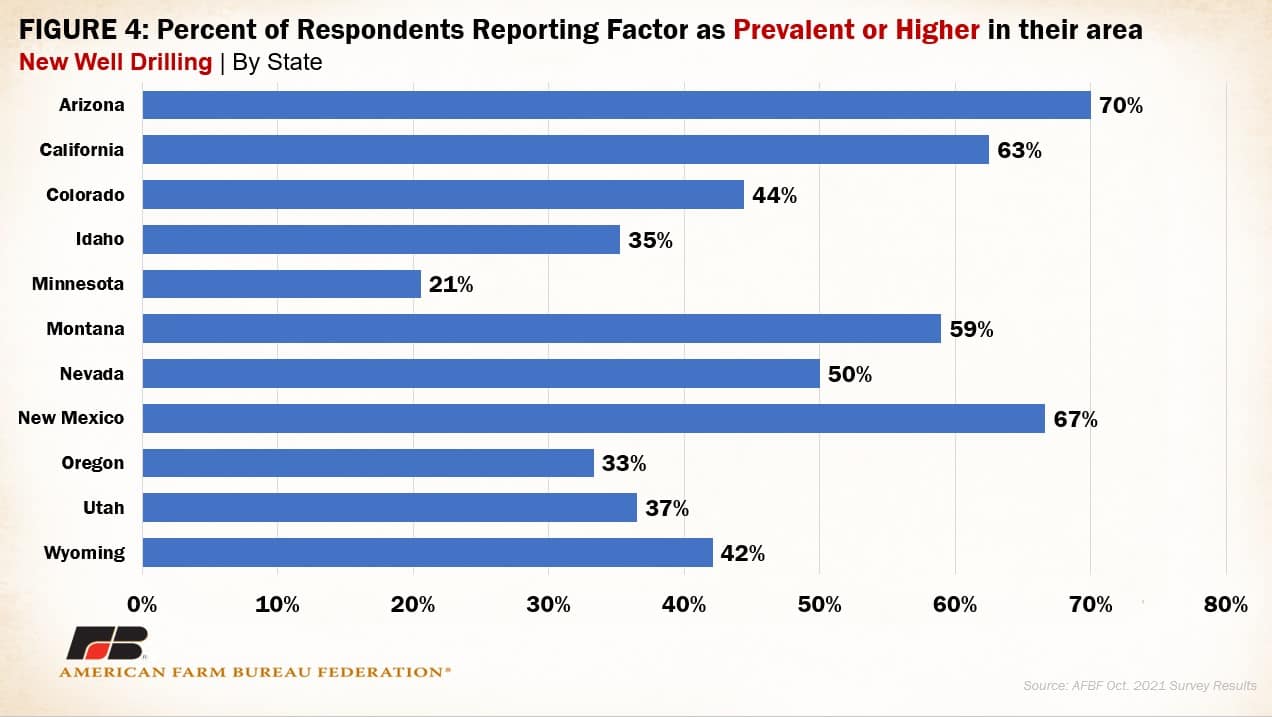
Crop producers across the region have been far from spared. Average yields for the 2021 harvest season are expected to be 42% lower than 2020 yields, with the highest decline expectation, 64%, reported in Montana.
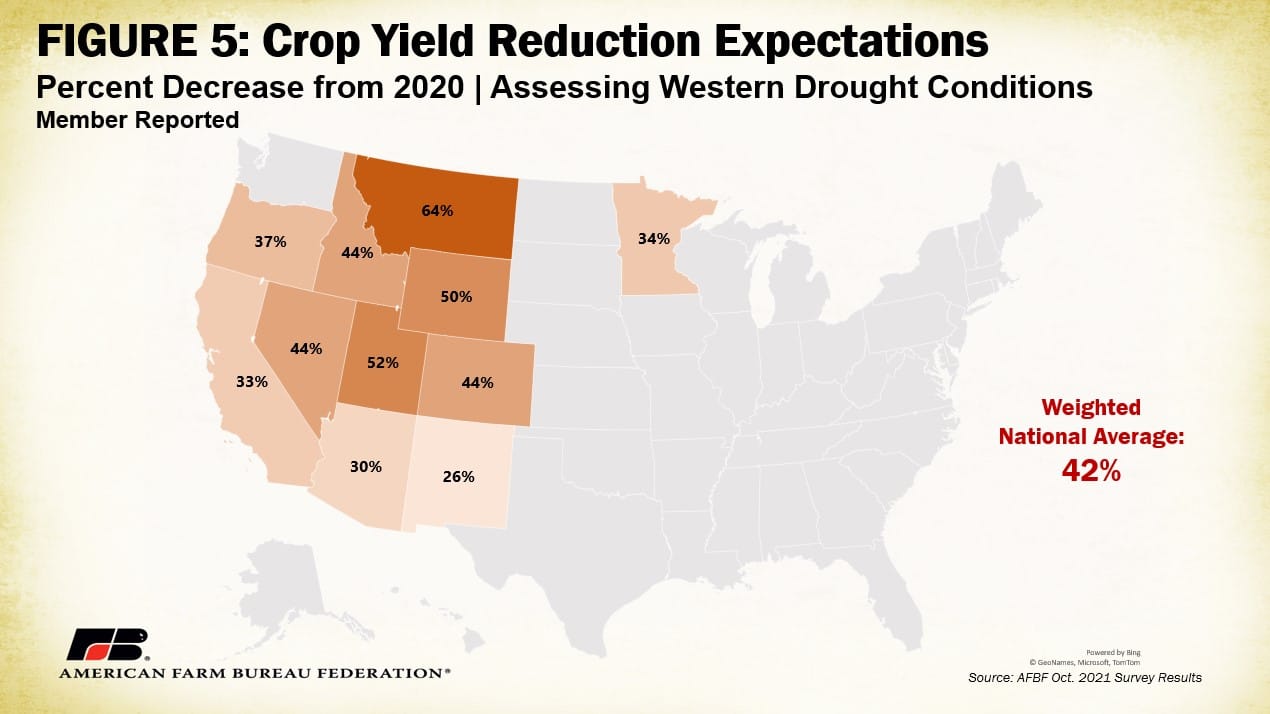
Conclusion
Farmers and ranchers across the West continue to battle severe drought conditions. The ability to illustrate the severity of these conditions and their impact on agriculture with existing data is greatly limited. The results of AFBF’s Assessing Western Drought Conditions survey offer a window into operational-level hurdles farmers and ranchers face in coping with persisting water shortages. Most of these issues and adjustments negatively impact business income, putting the solvency of many farms and ranches at risk. Given the West’s vital role in providing over a third of American agricultural production by value, discussing and undertaking effective drought mitigation objectives is vital to a secure domestic food supply and to protecting our farm and ranch families.
###
AFBF Market Intel
Photo Credit: Montana Farm Bureau

